April-June 2013
Field Report
During the beginning of April, planting the 2013 Bellavista revegetation site with children from the community was completed. While delivering trees to the site, fruit trees were also given directly to community members for planting at their houses.This is the last Planet Drum (PD) revegetation site to be planted this year since the rainy season has wrapped up and the dry season is setting in.

Malte and Jeannette pass out fruit trees to
members of the Bellavista community.
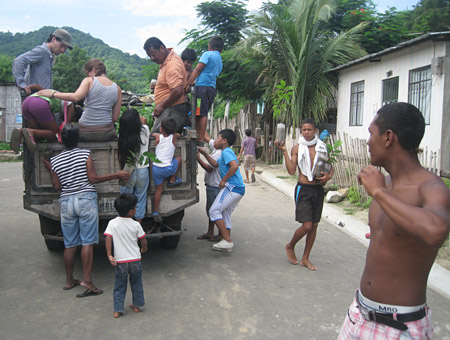
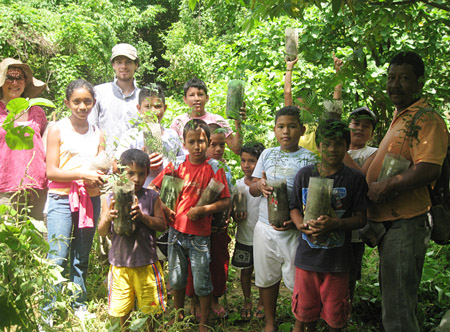
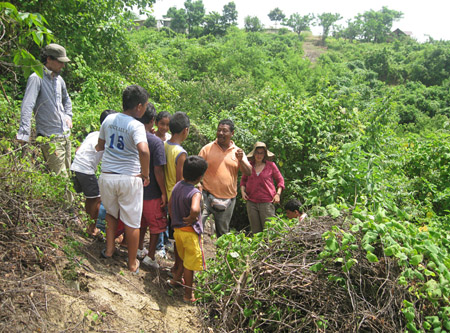
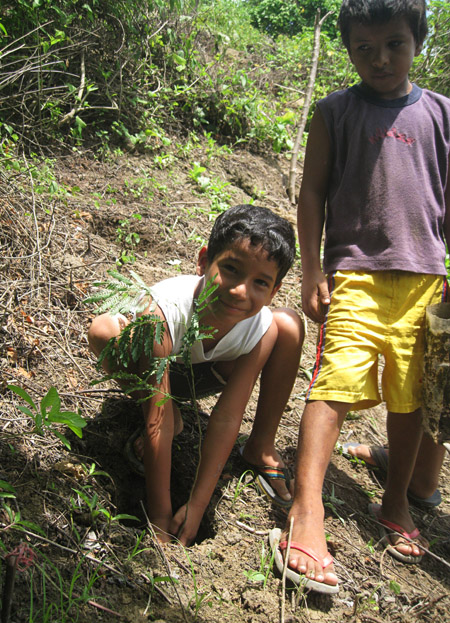

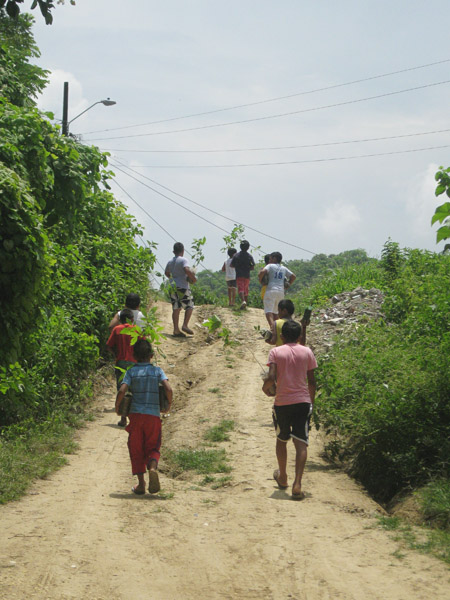
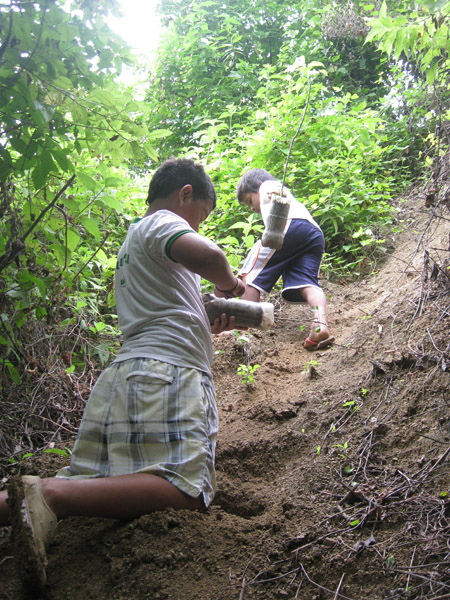

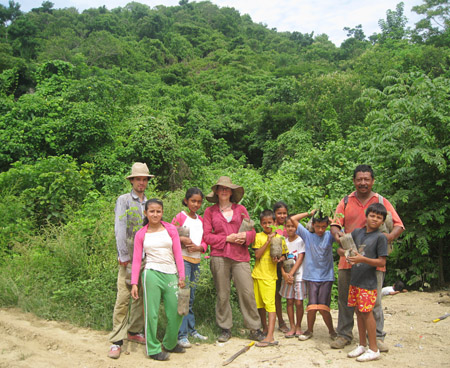
Cooler, more overcast days with minimal to non-existent precipitation are expected until December. The National Oceanic and Atmospheric Administration (NOAA) is predicting El Niño Southern-Oscillation (ENSO) neutral conditions for the upcoming months (http://www.cpc.ncep.noaa.gov/products/analysis_monitoring/enso_advisory/ensodisc.html) so it should be a usual dry season. This cooler and more overcast weather has been excellent for field work. Additionally, it brings a much welcomed drop in the number of mosquitoes, so much so that using a net for sleeping has become optional.
The Global Student Embassy (GSE) visited the greenhouse with two more groups for revegetation workshops. The students learned about the PD Revegetation Project and assisted in transplanting hundreds of baby trees into reutilized plastic soda bottles.
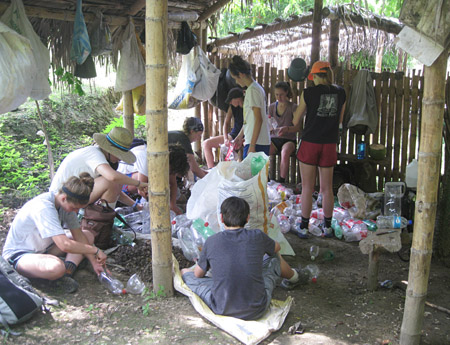
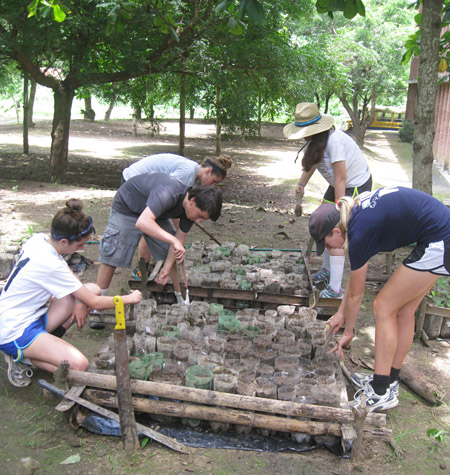
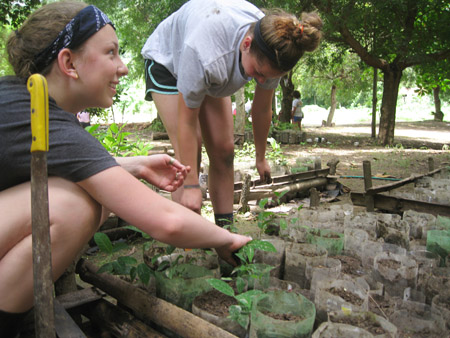


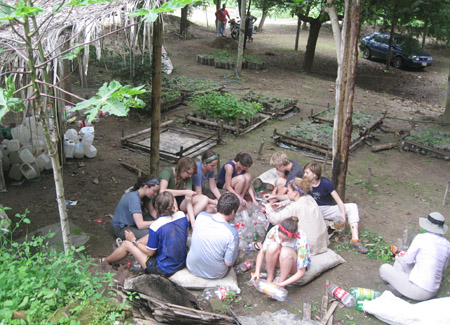




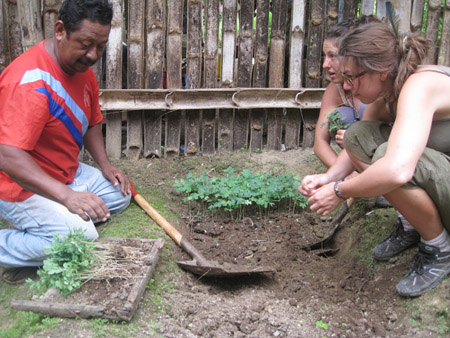

For the second half of April and the beginning of May, I took a vacation with my family to the United States, specifically San Francisco, CA. While there I had the opportunity to check in with the PD headquarters and participated in a staff lunch with other members of the PD team. It was great to see everyone in person. The house and office in Bahia were closed for that time, but Orlando kept the greenhouse running and made sure the trees stayed healthy during my absence.
Shortly after my return, a new group of volunteers began showing up. Currently there are two community engagement interns who will each be spending 3 months developing increased community interaction as part of their PD projects. Eric, from Ohio, is a grad student studying International Development, and Becky, from New York, is working towards a Masters in Natural Resources and Sustainable Development and International Affairs. We’re excited to have them onboard and look forward to strengthening communities ties through their work. Additionally, Joffrey from France, a professional in GIS work, is helping to GPS map all of the revegetation sites that PD has planted since 2007 (and some from before then as well). Plus we have the revegetation volunteer crew, headed up by Itxaso from Germany. It includes a group of students from Sage Educators (who often volunteer in summer) for a two week visit and more volunteers are expected soon and in July. This solid work force is completing the regular workload, along with some interesting additional projects.
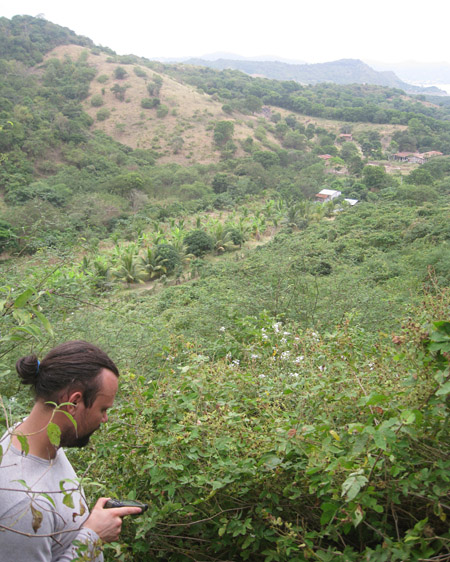
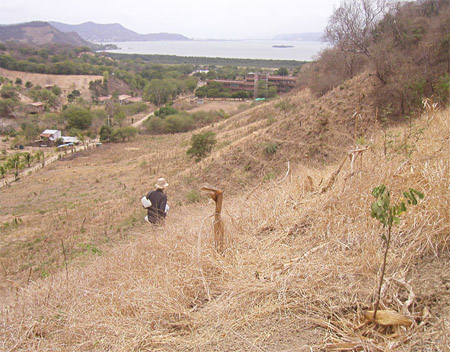

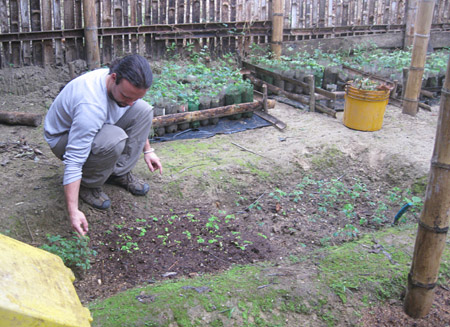
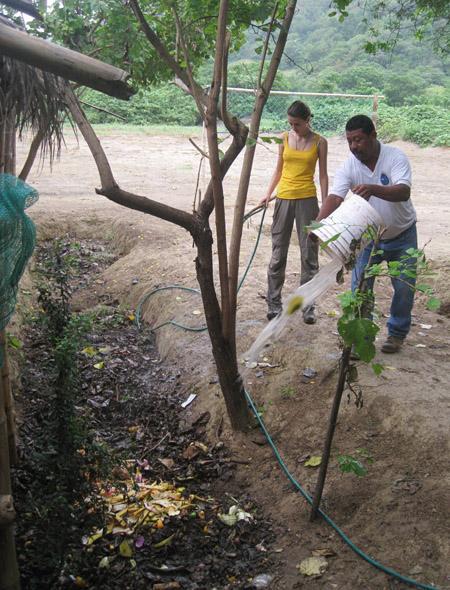
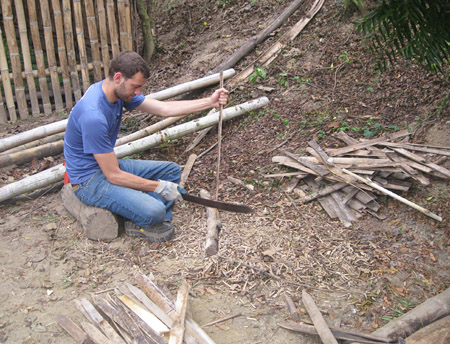
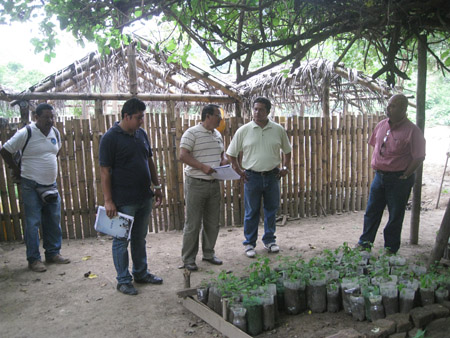
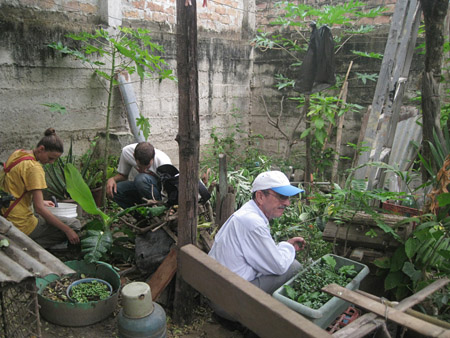


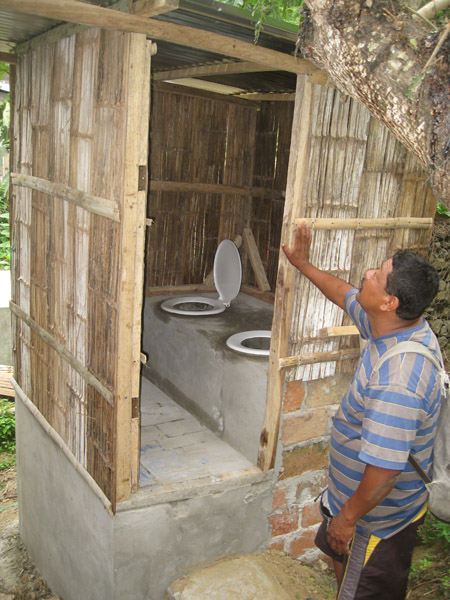

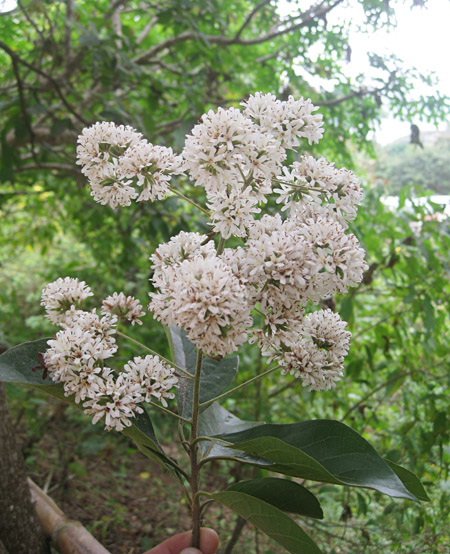
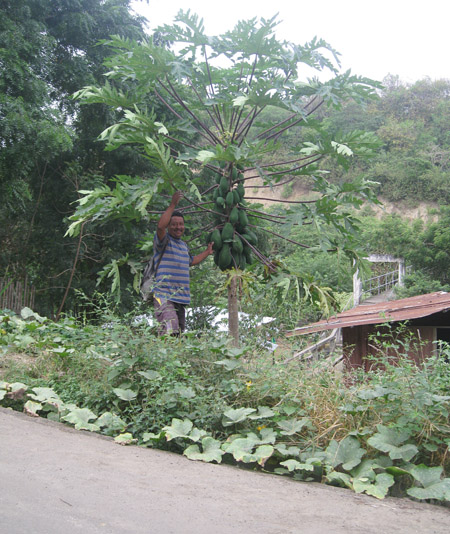
Currently, seeds are germinating at the greenhouse. Seedbeds of Tamarindo, Guayaba, Caoba, Laurel, Tierramonte, Chirimoya, Guachepeli, Grosella, and Pechiche were prepared and are in the process of germinating, and more will be planted soon. Shortly after germinating, the trees need to be transplanted to individual plastic bottles. This is a labor intensive project since bottles need to be cut, soil mixed and filled in the bottles, plus the actual transplanting of the trees.
In a series of fortuitous events that benefits both PD and Bahía, one of the local schools, whose students previously attended PD bioregional education classes and who have been helping collect plastic bottles recently, expressed interest in having students participate in educational workshops at the greenhouse. With an abundance of trees needing transplanting at the greenhouse and a desire to educate Bahía youth about their environment, PD jumped at the opportunity to collaborate with the Montúfar school. The result has been a series of revegetation workshops where we educate the students about the Dry Tropical Forest, the threats facing this delicate ecosystem and PD’s efforts to reverse damaging human impacts. After giving an interactive lecture and a tour of the greenhouse including composting methods, the students are instructed how to transplant the trees and they participate in the process. Large groups of students are able to transplant hundreds (200-300) trees in an hour or so.
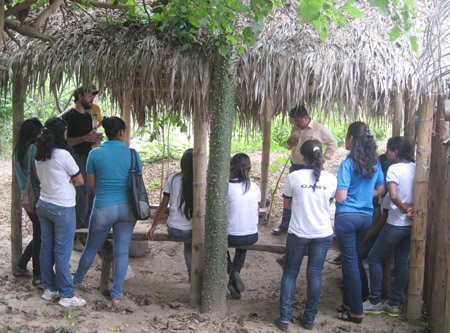
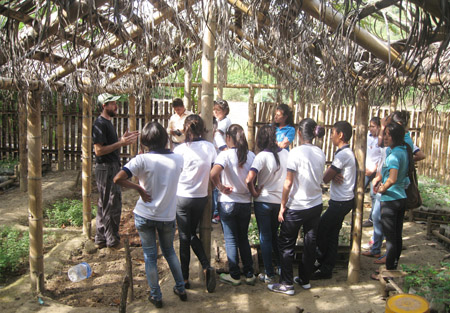

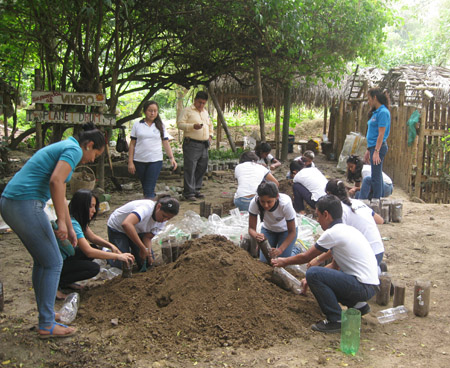
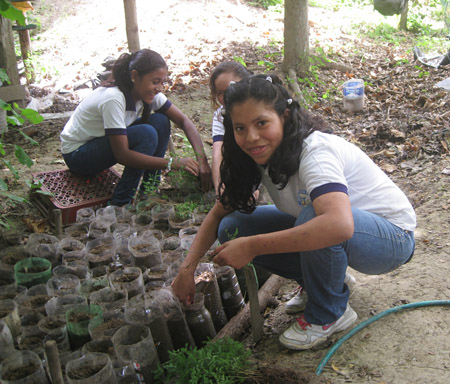
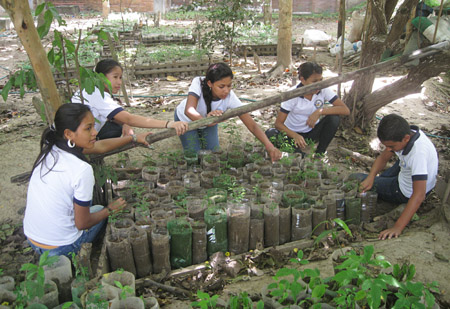
After taking the first group to the greenhouse, other students at the school were begging to be taken on a similar tour. Once PD had enough bottles collected at the greenhouse, we took a second group of students to the greenhouse for a morning. For the moment, we are well caught up with transplanting, and will wait a couple of weeks until more trees grow enough to be transplanted and then PD will host more groups for revegetation workshops.
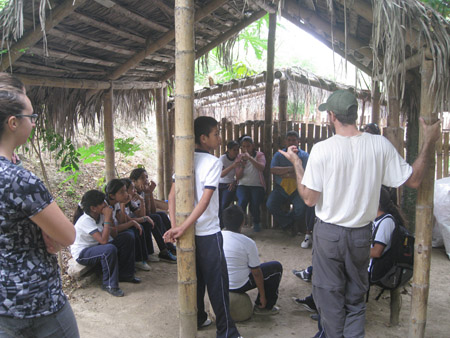
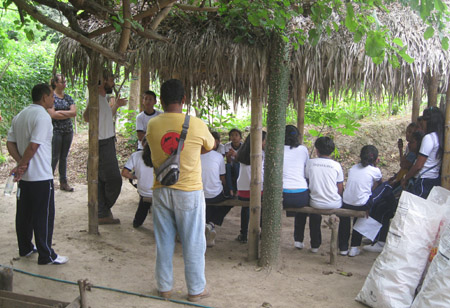
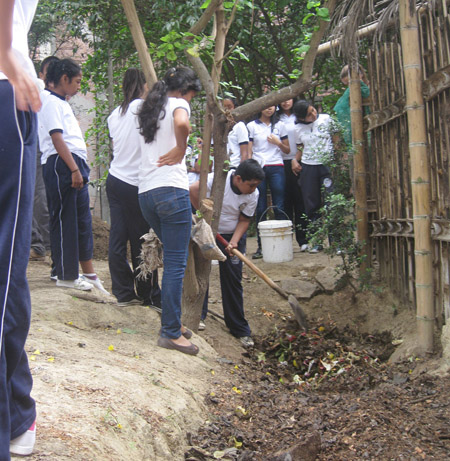


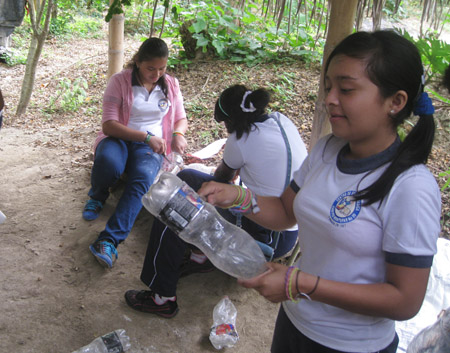

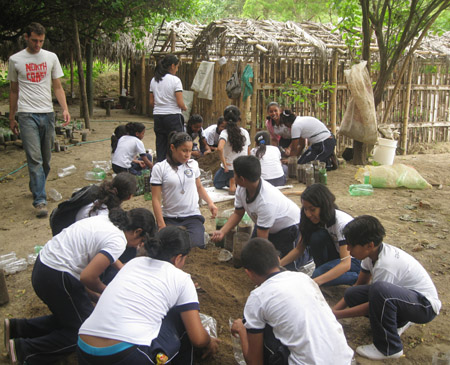
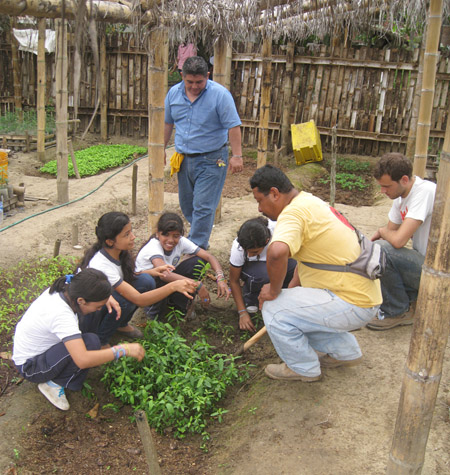
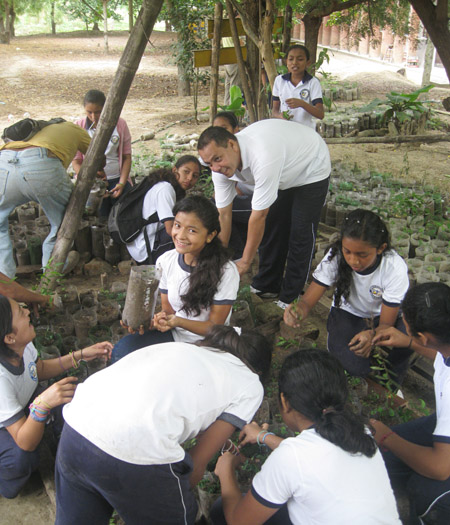
Additionally, more and more local groups (individuals, communities, government officials) are expressing interest in receiving trees for planting, particularly fruit trees. The beauty of this method of revegetating is that locals are helping produce the trees in the greenhouse to be delivered to other locals who assist in planting and caring for the trees. Demand for fruit trees currently appears to be insatiable since people are especially interested in trees that will directly benefit them in the future by producing fruit. Planet Drum’s role in this revegetation becomes more about facilitating the process by providing the infrastructure and expertise to grow the trees and less about doing all of the labor ourselves. This is an extremely important distinction because people are far more likely to care for a tree that they take the time to plant compared with a tree planted by a stranger. And of course it is always exciting to see locals approach us with interest in being involved in the project.
Pásalo bien,
Clay

Your article helped me a lot, is there any more related content? Thanks!
Can you be more specific about the content of your article? After reading it, I still have some doubts. Hope you can help me.